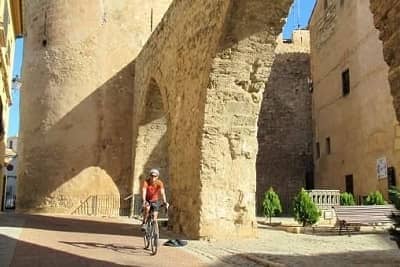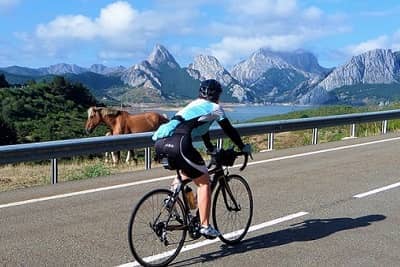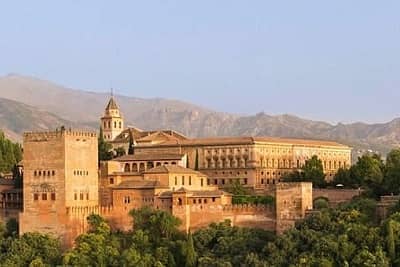The Wind in Spain - How Cyclists Can Take Advantage
Very little can make us more dispirited on a cycle tour than battling a head wind all day. The slow going, the noise and the discomfort can sap the motivation of the most hardy rider.
Conversely, there is very little more exhilarating than being
carried along by a tail wind; particularly on flatter or rolling routes.
Wind, for good and for bad, is a part of cycling and we have to deal with it all at some point, but if offered the choice, you would take the tail wind, wouldn't you?
Here in Spain, a country of mountains and surrounded by the sea, we are affected by many different winds; some strong, some seasonal and some downright nasty. Here we aim to shed some light on the predominant winds in various parts of the country, to help you plan a cycle tour more effectively.
This map shows the dominant winds over the Iberian peninsula. Of course, this does not mean that the wind always blows in this direction, just that it does so more often than not. The large black arrows are the major, often strong winds which affect vast swathes of the country, while the smaller blue arrows refer to more localised conditions.
You may notice that in some areas (such as southern Spain around Malaga and Granada) that there are arrows nearby going in opposite directions. Here the wind can be very localized because of the influence of the Atlantic, the Mediterranean and the mountain ranges near to the coast, such as the Sierra Nevada. In other areas there is a clear dominant direction and, if possible, we would recommend planning your trip to go in the same direction as the arrow!
On the other hand, if you are riding across the flat or gently rolling meseta of central Spain then the wind is a huge deal. A 90km ride between Avila and Salamanca, for example, can be comfortable for most riders with a tail wind, but can be a very long and arduous day with a head wind. Similarly, if you are likely to be facing a cross wind for much of the day, it is a good idea to avoid roads with traffic (which fortunately is very easy to do in Spain), so that the consequences are minor if you do get blown across the road at some point!
If you are doing a set route where the direction can not really be changed, for example the Camino de Santiago; knowledge of the wind is perhaps of less value. However, it can still help you to estimate how far you can reasonably expect to ride day after day.
But if you want to give yourself a little advantage and perhaps increase the enjoyment of your ride, we hope you find the above map to be of some use.
If you hate headwinds and want to avoid it at all costs when on a bike, check out some of our holidays below. These tend to be very calm and pleasant throughout the year, or have predominant tail winds!
Wind, for good and for bad, is a part of cycling and we have to deal with it all at some point, but if offered the choice, you would take the tail wind, wouldn't you?
Here in Spain, a country of mountains and surrounded by the sea, we are affected by many different winds; some strong, some seasonal and some downright nasty. Here we aim to shed some light on the predominant winds in various parts of the country, to help you plan a cycle tour more effectively.
Predominant Winds in Spain
This map shows the dominant winds over the Iberian peninsula. Of course, this does not mean that the wind always blows in this direction, just that it does so more often than not. The large black arrows are the major, often strong winds which affect vast swathes of the country, while the smaller blue arrows refer to more localised conditions.
You may notice that in some areas (such as southern Spain around Malaga and Granada) that there are arrows nearby going in opposite directions. Here the wind can be very localized because of the influence of the Atlantic, the Mediterranean and the mountain ranges near to the coast, such as the Sierra Nevada. In other areas there is a clear dominant direction and, if possible, we would recommend planning your trip to go in the same direction as the arrow!
Planning A Route
When planning a route for a cycling trip, it's important to remember that not all winds will affect you equally. For example, if you are riding in mountains such as the Picos de Europa, Mallorca Tramuntana mountains or the Sierra de Aitana, the wind will only be a minor factor. Even if it is a strong headwind, you will be largely shielded from it when climbing, and it will just be a minor annoyance on the descent.On the other hand, if you are riding across the flat or gently rolling meseta of central Spain then the wind is a huge deal. A 90km ride between Avila and Salamanca, for example, can be comfortable for most riders with a tail wind, but can be a very long and arduous day with a head wind. Similarly, if you are likely to be facing a cross wind for much of the day, it is a good idea to avoid roads with traffic (which fortunately is very easy to do in Spain), so that the consequences are minor if you do get blown across the road at some point!
If you are doing a set route where the direction can not really be changed, for example the Camino de Santiago; knowledge of the wind is perhaps of less value. However, it can still help you to estimate how far you can reasonably expect to ride day after day.
A Couple of Caveats
It bears repeating that the predominant wind direction is a question of probability and, even with the best planning, you can still find yourself facing an unexpected headwind. Furthermore, the wind in Spain is not something to be overly concerned about when cycling; it rarely is strong enough to be dangerous and completely still days are also very common.But if you want to give yourself a little advantage and perhaps increase the enjoyment of your ride, we hope you find the above map to be of some use.
If you hate headwinds and want to avoid it at all costs when on a bike, check out some of our holidays below. These tend to be very calm and pleasant throughout the year, or have predominant tail winds!
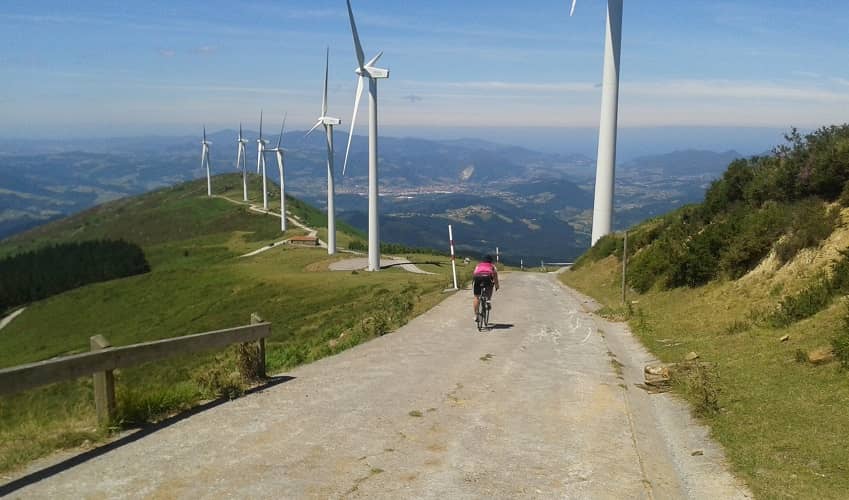
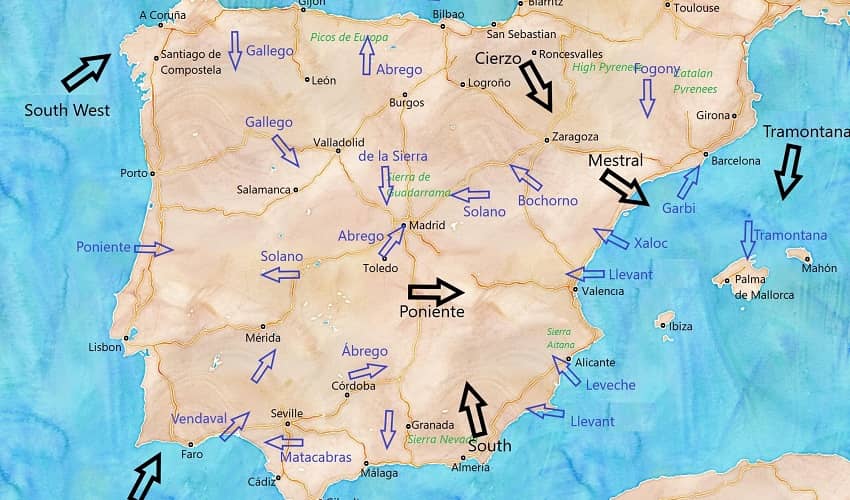
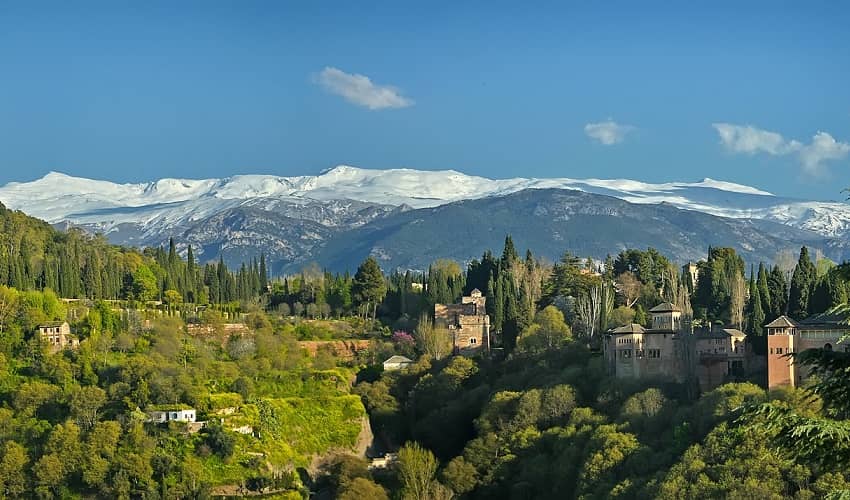
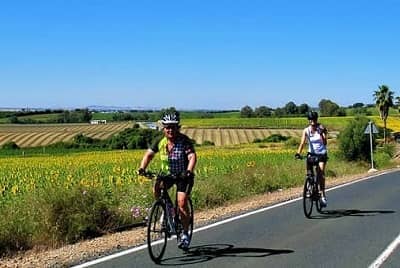
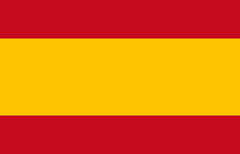 Spain
Spain
